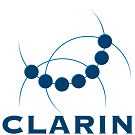Corpora and lexicons: Difference between revisions
No edit summary |
|||
| Line 16: | Line 16: | ||
From 1994 onwards, the Institute for Dutch Lexicology (INL), predecessor of the Dutch Language Institute, put several corpora of contemporary Dutch online: the 5, 27 and 38 million words corpora, and the Dutch Parole Internet Corpus. The materials from these older corpora have been added to the CHN. | From 1994 onwards, the Institute for Dutch Lexicology (INL), predecessor of the Dutch Language Institute, put several corpora of contemporary Dutch online: the 5, 27 and 38 million words corpora, and the Dutch Parole Internet Corpus. The materials from these older corpora have been added to the CHN. | ||
==Corpus of Middle Dutch== | |||
The Corpus of Middle Dutch is a collection of rhyming texts and prose from the period of 1300-1550. It contains classics such as Beatrijs, Van den vos Reynaerde, the abele spelen, the stories about King Arthur and about Charlemagne, all texts from the famous Gruuthuuse manuscript (including the Egidius song), but also many of the lesser known or less researched texts, such as prose adaptations of the rhyming knight’s tales (the so-called ‘folk books’), collections of songs such as the Antwerp Songbook, various Bible translations, hagiographies, books of prayer, chronicles, and all kinds of religious, didactic and scientific treatises, medical manuals and recipes. | |||
The corpus was compiled on the basis of mainly critical, scientifically sound text editions. In time, it will be annotated with word classes and lemmas, to improve searchability. | |||
Revision as of 15:31, 26 November 2020
Brieven als Buit
Gysseling Corpus
The Gysseling Corpus is the collection of all 13th-century texts that have served as source material for the Dictionary of Early Middle Dutch (VMNW). The corpus consists mainly of official and literary sources of thirteenth-century texts that have been handed down in 13th-century manuscripts.
The texts are diplomatic editions, which means that the source texts have been rendered in modern script as accurately as possible. The corpus has been linguistically annotated with word classes and modern Dutch lemmas (entry words) to enhance its searchability. The annotation of the entire corpus has been manually verified.
Corpus of Contemporary Dutch
In order to monitor contemporary Dutch, the Dutch Language Institute has created the Corpus of Contemporary Dutch (CHN): an ever-growing collection of already more than 800,000 texts from newspapers, magazines, news broadcasts and legal materials.
Contents of the CHN
We try to include sources in this corpus that continually provide us with new text materials. But in principle, all text materials used in the various projects of the Dutch Language Institute end up in the CHN, such as the ANW corpus (1970 – now), compiled for our Dictionary of Contemporary Dutch.
From 1994 onwards, the Institute for Dutch Lexicology (INL), predecessor of the Dutch Language Institute, put several corpora of contemporary Dutch online: the 5, 27 and 38 million words corpora, and the Dutch Parole Internet Corpus. The materials from these older corpora have been added to the CHN.
Corpus of Middle Dutch
The Corpus of Middle Dutch is a collection of rhyming texts and prose from the period of 1300-1550. It contains classics such as Beatrijs, Van den vos Reynaerde, the abele spelen, the stories about King Arthur and about Charlemagne, all texts from the famous Gruuthuuse manuscript (including the Egidius song), but also many of the lesser known or less researched texts, such as prose adaptations of the rhyming knight’s tales (the so-called ‘folk books’), collections of songs such as the Antwerp Songbook, various Bible translations, hagiographies, books of prayer, chronicles, and all kinds of religious, didactic and scientific treatises, medical manuals and recipes.
The corpus was compiled on the basis of mainly critical, scientifically sound text editions. In time, it will be annotated with word classes and lemmas, to improve searchability.
